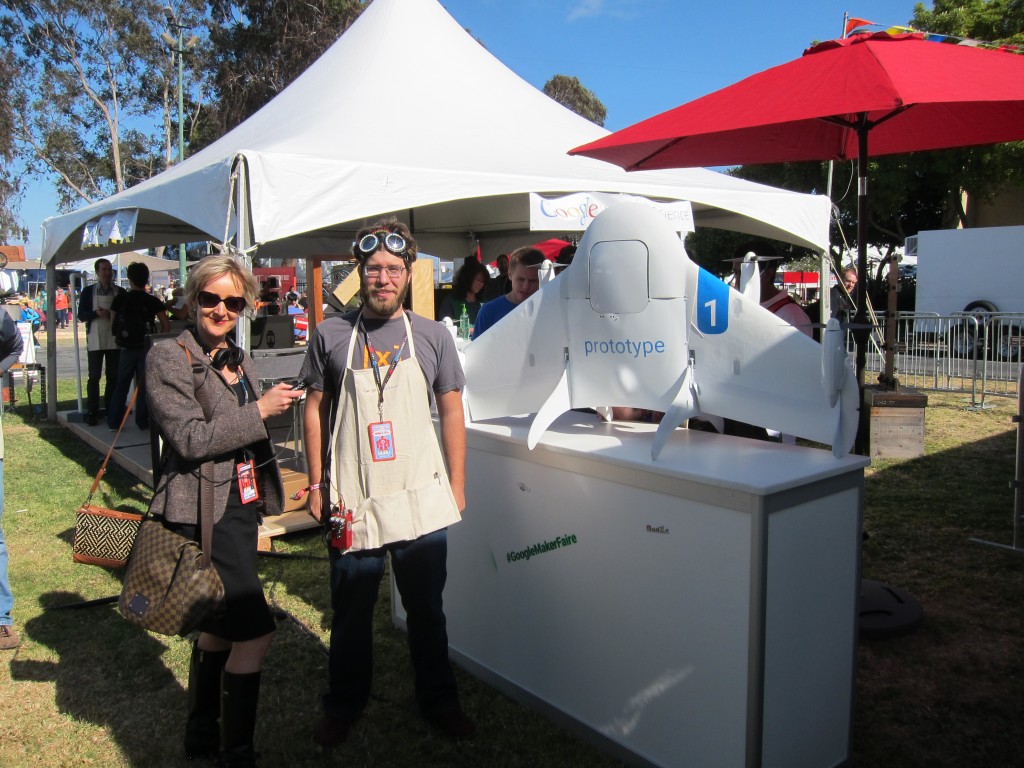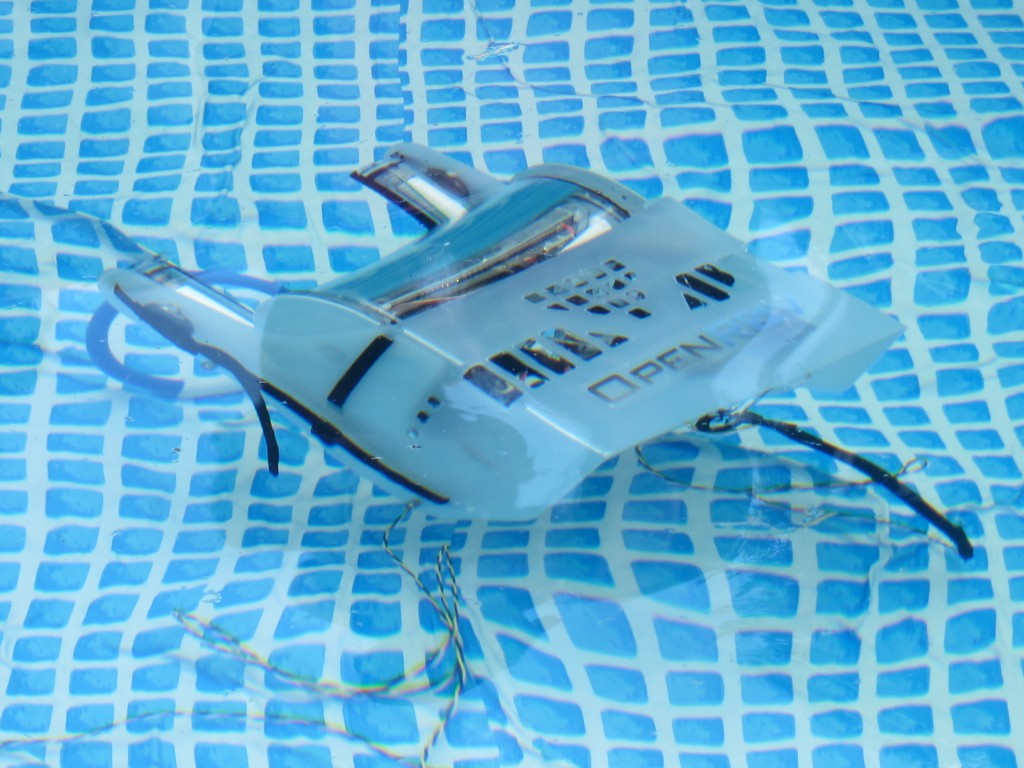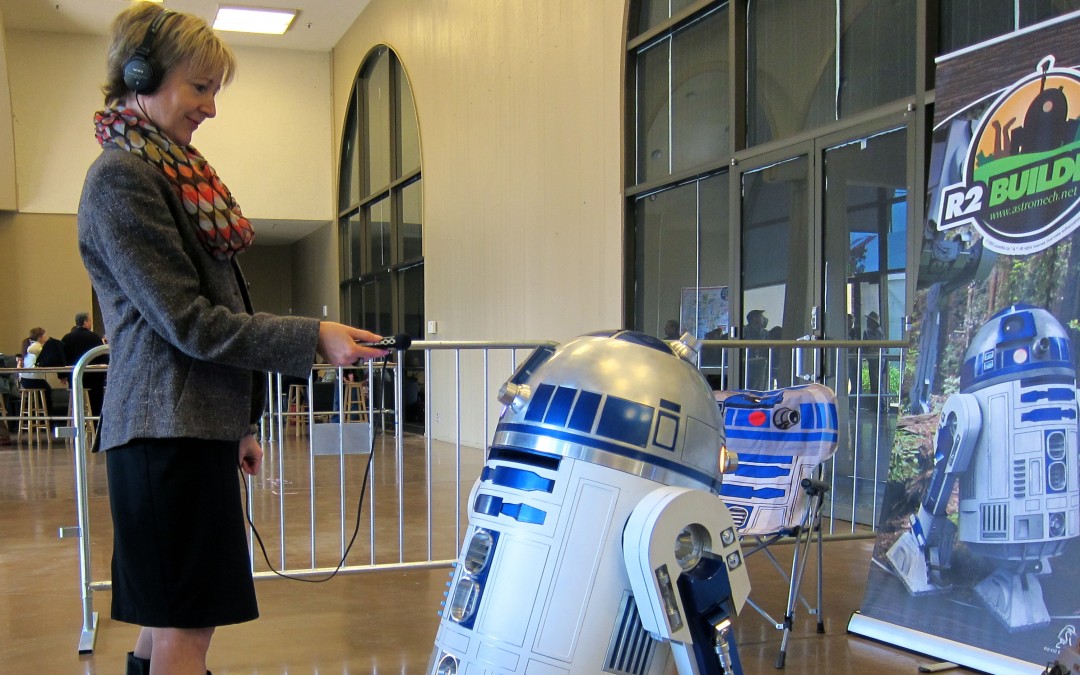By Alison van Diggelen, host of Fresh Dialogues
Hear the word drone and you’ll likely think of military predator drones: forces of death and destruction. But what about drones as a force for restoration: emergency relief, education or even saving the planet?
I explored the future of drones at the San Francisco Bay Area Maker Faire, on assignment for the BBC World Service; and spoke with drone experts from GoogleX, OpenROV and even….R2D2. The latter was one of my toughest interviews ever. Next time, I’ll bring a droid translator.
My report aired today on BBC’s Tech Tent. Listen to the podcast here or below (starts @17:30)
Here’s a transcript of the report:
R2D2 sets the scene (translations welcome via Twitter)
van Diggelen: I’m here at the SF Bay Area Maker Faire, a “show and tell” gathering of tech enthusiasts, hobbyists, artists and engineers. You could say I’m here to meet my maker… to explore drones designed not for destruction but to make the world a safer, more egalitarian, greener place. Here’s Adem Rudin, who works at GoogleX.
Rudin: This is Project Wing. We’re doing drones for delivery and our end goal is to deliver anything to anyone, anywhere and do it quickly.
We’re trying to build a platform that people can use in whatever way they can dream up…In 2014, we went to the Outback, near Brisbane and met up with a couple of farmers out there, operated for about a week, delivering bottled water, food, two-way radios…
 van Diggelen: Does it have some kind of attachment you can put things in?
van Diggelen: Does it have some kind of attachment you can put things in?
Rudin: The package is on the underside and when we want to deliver, we bring the aircraft into a hover and actually winch the package down to the customer waiting on the ground.
van Diggelen: It looks a bit like a stingray…
Rudin: We tried to make it look friendly…unobtrusive and it also is fairly quiet up in the air…
van Diggelen: When you see what’s going on in Nepal…do you see that being a future potential application for this drone?
Rudin: Yes … It would be a very quick, very low cost way to get out, take aerial photographs of disaster areas and deliver emergency supplies directly to people.
van Diggelen: Since this is one of the secretive GoogleX projects, Rudin was unable to give me a timeline for when we might see these Google drones filling our skies.
Audio: sound of bubbles, submarine drone reaching surface, diving down again
van Diggelen: The beauty of Maker Faire is discovering what’s just round the corner. I found Zack Johnson standing by a huge paddling pool operating a submarine drone – about the size of a shoebox.
He’s the project manager for an underwater drone called OpenROV that allows anyone to channel their inner Jacques Cousteau. (Check out OpenROV Founder, David Lang’s TED talk).
 Johnson: It goes down to about 75 meters and films live video that goes back to the shore and you control it either with an Xbox controller or a USB joystick or with a laptop.
Johnson: It goes down to about 75 meters and films live video that goes back to the shore and you control it either with an Xbox controller or a USB joystick or with a laptop.
There’s basically two things stopping people becoming Jacques Cousteau. One is price… The other one is know-how.
van Diggelen: Johnson’s DIY kit sells for $900 to a global market. The company supports an international community of users who share their expeditions online.
Johnson: We call it Open Explorer: it’s a web platform for sharing expeditions. There are people who’re using ROVs to look for sunken tombs, buried treasure, marine archaeology, water sampling, coral reef monitoring…
There are some academic applications. Especially regarding coral reefs. That is a big focal point for the environmental movement right now because it’s a great litmus for the health of the ocean.
van Diggelen: So drones will be used in the fight against climate change, to help save endangered species, to deliver emergency supplies and even bring the Internet to remote places in the world. The future of drones is as vast as the open sky. Its only limit? Our imagination.
Want to explore more BBC reports and commentary? Click here for archives on everything from sexism in Silicon Valley to tech solutions to the California drought.




